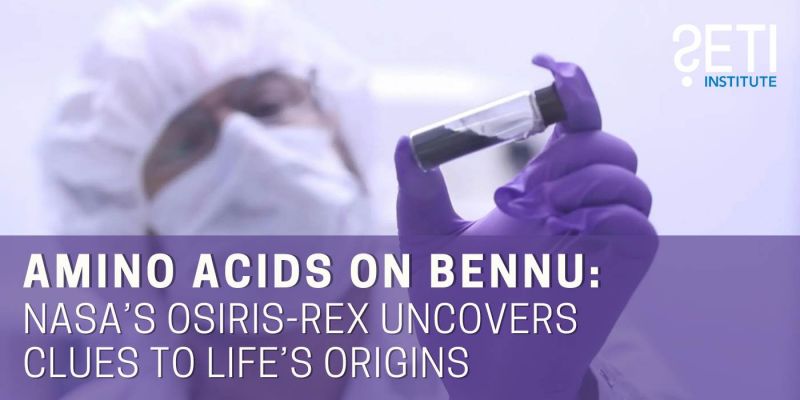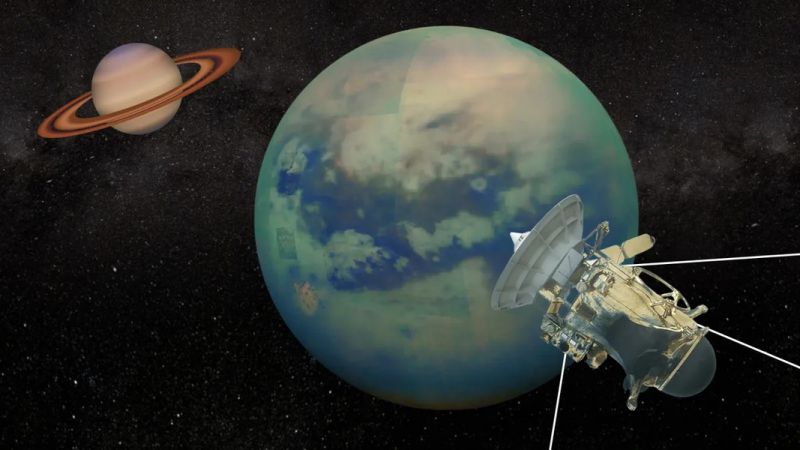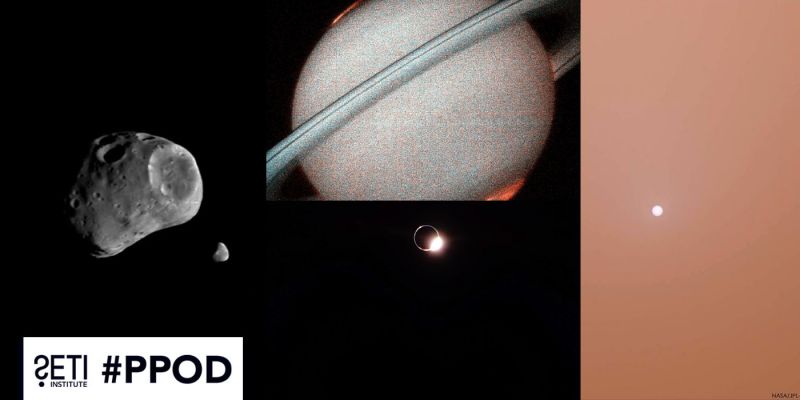New Girl Scout badges make space science more accessible to girls.
The organizations will celebrate Reaching for the Stars: NASA Science for Girl Scouts on August 21 with total solar eclipse viewing events.
Mountain View, CA—Today, Girl Scouts of the USA (GSUSA) announced new details about a five-year program called Reaching for the Stars: NASA Science for Girl Scouts. Funded by NASA’s Science Mission Directorate and led by the SETI Institute, the program offers more girls opportunities to explore careers in science, technology, engineering, and math (STEM) through new Space Science badges.
Research shows women are still vastly underrepresented in STEM fields and exposing girls to these subjects at a young age is vital to ignite their curiosity and close this gap. In response, together with five partners—the SETI Institute, Girl Scouts of Northern California, the Astronomical Society of the Pacific, the University of Arizona, and ARIES Scientific—GSUSA is equipping girls as young as five years old with the confidence and skills they need to take their STEM interest to the next level.
At the center of the collaboration are new Space Science badges for girls at every Girl Scout grade level. These badges, combined with GSUSA’s larger suite of national STEM programming, provide a seamless pathway for girls to develop a lifetime love of the cosmos and its endless possibilities. The badges range from Space Science Explorer, which introduces Daisies in kindergarten and first grade to the fundamentals of space science, to Space Science Master, which engages Ambassadors in grades 11–12 in their own explorations of space based on research that NASA scientists are conducting. Other badges include Space Science Adventurer (for Brownies), Space Science Investigator (for Juniors), Space Science Researcher (for Cadettes), and Space Science Expert (for Seniors).
By 2019, the Space Science badges will join GSUSA’s already robust roster of STEM badges for girls, and all badge content and activities will be delivered to volunteers through the organization’s national online Volunteer Toolkit. This “digital assistant” for troop leaders, volunteers, and parents not only makes it easier than ever to plan meetings and activities but also makes STEM programming more accessible and understandable for volunteers, reducing the intimidation some feel when guiding girls’ STEM experiences.
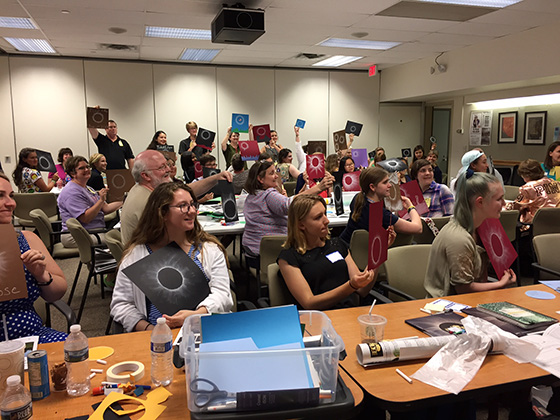
Additionally, thanks to NASA’s funding, this summer 90 Girl Scout councils across the United States received kits filled with materials that allow girls to explore space science and eclipse-related activities, leading up to the August 21, 2017 Total Solar Eclipse. The kits include instructions for educational activities, such as using smartphones or digital cameras to “see” infrared light, using the sun to tell time, and building a solar oven. Many Girl Scout councils will hold eclipse-viewing events on August 21; visit www.girlscouts.org/councilfinder to contact a local council for information.
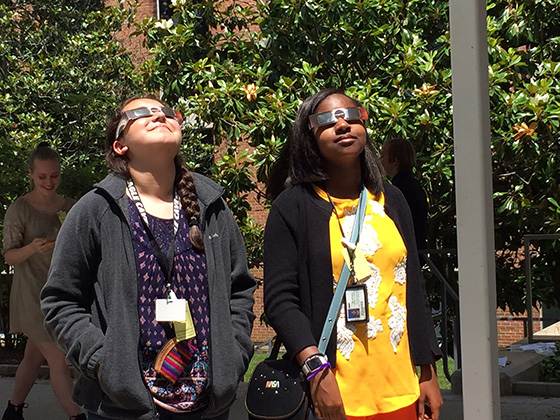
“We are incredibly grateful for the SETI Institute’s partnership and the funding from NASA’s Science Mission Directorate to make space-science learning even more accessible to girls,” said GSUSA CEO Sylvia Acevedo. “My experience as a Girl Scout prompted my love of all things STEM, and served as the foundation for my future career as a rocket scientist. It also empowered me with the leadership skills and confidence to excel within a male-dominated field. Now, through this collaboration, even more girls will have the opportunity to explore the exciting realm of space science, in the supportive and holistic environment that Girl Scouts provides.”
According to the Girl Scout Research Institute study Generation STEM: What Girls Say about Science, Technology, Engineering, and Math (2012), though a majority of girls find STEM fields interesting (including 74 percent of teen girls), gender barriers persist: only 13 percent of girls say their first career choice would be in STEM, and 57 percent say that if they went into a STEM career, they’d have to work harder than a man to be taken seriously. In addition, extracurricular engagement in STEM among girls remains low. Only a third (36 percent) of girls who identify as having an interest in STEM report having participated in STEM activities outside school.
Girl Scouts has long been committed to challenging stereotypes and providing girls of all ages with interactive and engaging programs that increase their interest in STEM. In fact, the Girl Scout Research Institute’s The Girl Scout Impact Study (2017) found that Girl Scouts are more likely than non–Girl Scouts to participate in STEM activities, such as conducting science experiments, designing video games, and building robots (60 percent versus 35 percent). And Girl Scouts goes beyond offering STEM content by also providing a supportive all-girl environment that fosters social, emotional, and leadership development, the ingredients girls need to develop the confidence to persevere and succeed.
“Girl Scouts, the SETI Institute, and NASA have a rich heritage of working together to give girls more opportunities to learn about space science, and we are excited to advance the cause,” said the SETI Institute Director of Education Edna DeVore. “With the resilience, ingenuity, and courage Girl Scouts instills in girls, it’s no surprise that many female astronauts in the United States are Girl Scout alumnae. We recognize today’s girls are tomorrow’s STEM leaders, and with the new badges and programming, Girl Scouts everywhere will have access to even more of these opportunities, building the next generation of women leaders in STEM that we so desperately need.”
“Reaching for the Stars is one of the most impactful and far-reaching education programs ever undertaken by the SETI Institute, and we’re proud to be collaborating with the Girl Scouts to both educate and empower young women in critically important STEM fields” said SETI Institute CEO, Bill Diamond.
Along with the new badges and total solar eclipse events, GSUSA’s collaboration with NASA and the SETI Institute supports leadership training in astronomy for Girl Scouts at NASA’s Goddard Space Flight Center and the University of Arizona.
To join or volunteer, visit www.girlscouts.org/join.
We're Girl Scouts of the USA
We're 2.6 million strong—1.8 million girls and 800,000 adults who believe in the power of every G.I.R.L. (Go-getter, Innovator, Risk-taker, Leader)™ to change the world. Our extraordinary journey began more than 100 years ago with the original G.I.R.L., Juliette Gordon “Daisy” Low. On March 12, 1912, in Savannah, Georgia, she organized the very first Girl Scout troop, and every year since, we’ve honored her vision and legacy, building girls of courage, confidence, and character who make the world a better place. We’re the preeminent leadership development organization for girls. And with programs from coast to coast and across the globe, Girl Scouts offers every girl a chance to practice a lifetime of leadership, adventure, and success. To volunteer, reconnect, donate, or join, visit www.girlscouts.org.
About NASA
NASA leads the Nation on a great journey of discovery, seeking new knowledge and understanding of our Sun, Earth, solar system, and the universe. The NASA Science Mission Directorate (SMD) searches for answers across three overarching themes: Safeguarding and improving life on Earth, searching for life elsewhere, and discovering the secrets of the Universe. SMD’s STEM Science Activation program advances STEM to improve U.S. scientific literacy through the leveraging of partners such as GSUSA and SETI.
“Reaching for the Stars: NASA Science for Girl Scouts” is based upon work supported by NASA Science under cooperative agreement No. NNX16AB90A. Any opinions, findings, and conclusions or recommendations expressed in this material are those of the author(s) and do not necessarily reflect the views of the National Aeronautics and Space Administration.
About the SETI Institute
Founded in 1984, the SETI Institute is a non-profit, multi-disciplinary research and education organization whose mission is to lead humanity’s quest to understand the origins and prevalence of life and intelligence in the Universe and to share that knowledge with the world. Our research encompasses the physical and biological sciences and leverages expertise in data analytics, machine learning and advanced signal detection technologies. The SETI Institute is a distinguished research partner for industry, academia and government agencies, including NASA and NSF.
Contact information
Rebecca McDonald
Director of Communications
SETI Institute
Ph: 650-960-4526
Email: rmcdonald@seti.org



